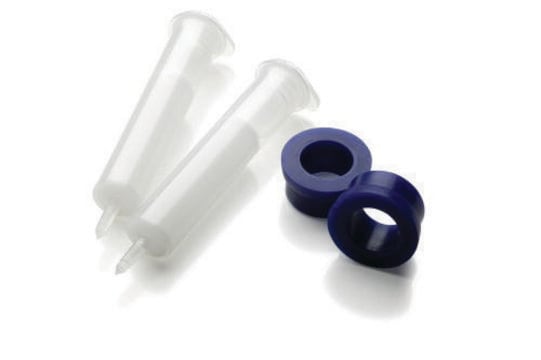To reduce the occurrence of sample-related bead aggregation, the following steps can be taken:
•Spin samples at 10,000 x g for 10 minutes immediately before preparing sample dilutions or loading samples into the plate.
•Resuspend the plate in Wash Buffer instead of Sheath or Drive Fluid. The plate must be read within a couple of hours, and the buffer should be switched to Sheath or Drive Fluid for longer storage.
•Dilute samples at a ratio of 1:2 or 1:4.
•Perform more wash cycles after the primary incubation step of the assay to remove substances that cause bead aggregation.
MCYTOMAG-70K-PMX
MILLIPLEX® Mouse Cytokine/Chemokine Magnetic Bead Panel - Premixed 25 Plex - Immunology Multiplex Assay
Simultaneously analyze multiple cytokine and chemokine biomarkers with Bead-Based Multiplex Assays using the Luminex technology, in mouse serum, plasma and cell culture samples.
Sinônimo(s):
Luminex® Mouse cytokine immunoassay, Millipore Mouse cytokine immunoassay, Mouse cytokine Multiplex Immunoassay
About This Item
Produtos recomendados
Nível de qualidade
reatividade de espécies
mouse
fabricante/nome comercial
Milliplex®
assay range
accuracy: 85-107%
standard curve range: 3.2-10,000 pg/mL
técnica(s)
multiplexing: suitable
compatibilidade
configured for Premixed
método de detecção
fluorometric (Luminex xMAP)
Condições de expedição
wet ice
Categorias relacionadas
Descrição geral
- More flexible plate and plate washer options
- Improved performance with turbid serum/plasma samples
- Assay results equivalent to non- beads
- Automated washing avoids many problems associated with vacuum filtration washing
MILLIPLEX® Mouse Cytokine / Chemokine panel enables you to focus on the therapeutic potential of cytokines as well as the modulation of cytokine expression. Coupled with the Luminex® xMAP® platform in a bead format, you receive the advantage of ideal speed and sensitivity, allowing quantitative multiplex detection of dozens of analytes simultaneously, which can dramatically improve productivity.
Panel Type: Cytokines/Chemokines
Aplicação
- Analytes: G-CSF, GM-CSF, IFN-γ, IL-1α, IL-1β, IL-2, IL-4, IL-5, IL-6, IL-7, IL-9, IL-10, IL-12 (p40), IL-12 (p70), IL-13, IL-15, IL-17, IP-10, KC, MCP-1, MIP-1α, MIP-1β, MIP-2, RANTES, TNF-α
Outras notas
Informações legais
Palavra indicadora
Danger
Frases de perigo
Declarações de precaução
Classificações de perigo
Acute Tox. 4 Dermal - Acute Tox. 4 Inhalation - Acute Tox. 4 Oral - Aquatic Chronic 2 - Eye Dam. 1 - Skin Sens. 1 - STOT RE 2
Órgãos-alvo
Respiratory Tract
Código de classe de armazenamento
10 - Combustible liquids
Certificados de análise (COA)
Busque Certificados de análise (COA) digitando o Número do Lote do produto. Os números de lote e remessa podem ser encontrados no rótulo de um produto após a palavra “Lot” ou “Batch”.
Já possui este produto?
Encontre a documentação dos produtos que você adquiriu recentemente na biblioteca de documentos.
-
It seems that the sample wells are experiencing low bead counts while the standard and control wells are unaffected. This issue is limited to 1 or 2 cytokines, while the rest show normal counts. It doesn't appear to be related to the instrument, bead loss, or inadequate bead mixing. What could be the possible reason for this discrepancy?
1 answer-
Helpful?
-
-
Does the addition of 25 µL of Assay Buffer to the sample well count as a dilution when using a Milliplex kit that does not require a sample dilution prior to loading the plate?
1 answer-
If the sample is not diluted prior to loading the plate, and the same volume of standard and sample are loaded, then there is no need to apply a sample dilution factor.
Helpful?
-
Active Filters
Nossa equipe de cientistas tem experiência em todas as áreas de pesquisa, incluindo Life Sciences, ciência de materiais, síntese química, cromatografia, química analítica e muitas outras.
Entre em contato com a assistência técnica











